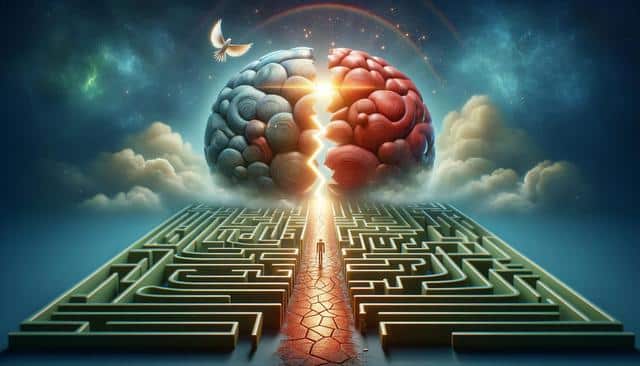
Exploring Effective Stroke Therapy: Pathways to Recovery
Understanding the Impact of Stroke and the Role of Therapy
A stroke can significantly impair a person’s ability to perform everyday tasks. Depending on the severity and area of the brain affected, it may lead to physical weakness, speech and language difficulties, memory loss, and emotional challenges. Stroke therapy seeks to address these issues through a multidisciplinary approach. Therapy is not only about physical recovery but also about helping individuals rebuild confidence and adapt to new ways of living. The recovery journey varies for each person and is influenced by factors such as age, overall health, and the extent of brain damage.
Effective stroke therapy typically begins in the hospital and continues into outpatient or home settings. Early intervention is crucial, as the brain’s plasticity is at its highest in the weeks following a stroke. The initial focus is often on preventing complications like muscle stiffness and blood clots. As therapy progresses, attention shifts to regaining lost abilities. Support from family members and caregivers is essential during this phase to maintain motivation and ensure consistent practice of therapeutic exercises.
Physical Therapy: Rebuilding Movement and Strength
Physical therapy is a cornerstone of stroke rehabilitation, aiming to restore mobility, balance, and coordination. Therapists design personalized exercise routines that target the affected limbs and muscles. These exercises may include:
- Range-of-motion activities to reduce stiffness
- Strength training to rebuild muscle power
- Balance exercises to prevent falls
- Gait training to improve walking ability
In addition to manual techniques, modern physical therapy may incorporate technologies such as robotic-assisted devices, electrical stimulation, and virtual reality systems. These tools can enhance motivation and provide more precise feedback to patients and therapists. Consistency is key—regular sessions and at-home exercises greatly contribute to long-term improvement. Therapists also teach patients how to use mobility aids like walkers or canes safely, promoting independence while reducing the risk of injury.
Occupational Therapy: Regaining Everyday Skills
Occupational therapy focuses on helping stroke survivors relearn daily activities such as dressing, bathing, cooking, and writing. It is particularly important in restoring independence and improving the quality of life. Therapists assess the patient’s ability to perform tasks and develop strategies to compensate for limitations. For example, if a person has lost fine motor control in one hand, the therapist might suggest adaptive tools or teach one-handed techniques for common activities.
Occupational therapy also addresses cognitive challenges that may arise after a stroke, such as problems with memory, attention, or problem-solving. Strategies used in therapy can include:
- Task segmentation to make complex activities manageable
- Use of visual cues and reminders
- Environmental modifications to enhance safety and accessibility
Additionally, occupational therapists often work closely with families to ensure a supportive home environment. This might involve rearranging furniture for easier navigation or installing grab bars in the bathroom. Such adjustments can significantly ease the transition back to home life and foster a sense of autonomy.
Speech and Language Therapy: Reconnecting Through Communication
Many stroke survivors experience communication issues, such as aphasia (difficulty understanding or producing language), dysarthria (slurred speech), or apraxia (difficulty coordinating speech movements). Speech and language therapy plays a critical role in addressing these deficits. Therapists tailor sessions to the individual’s specific challenges, using exercises that may focus on articulation, vocabulary retrieval, or sentence construction.
Speech therapists also help patients with swallowing difficulties, a condition known as dysphagia, which can lead to serious complications like aspiration pneumonia. Techniques used in therapy may include:
- Oral motor exercises to strengthen facial and throat muscles
- Language drills and games to rebuild vocabulary
- Use of communication aids such as picture boards or speech-generating devices
Involving family members in therapy sessions can be beneficial, as it provides them with tools to support communication at home. Encouraging regular practice and patience is essential, as language recovery often requires extended effort over time.
Psychological Support and Holistic Care in Stroke Recovery
Stroke not only affects the body but also takes a toll on mental and emotional well-being. Depression, anxiety, and frustration are common among stroke survivors, particularly when progress is slow. Integrating psychological support into stroke therapy can improve motivation and coping mechanisms. Mental health professionals, such as psychologists and counselors, can provide individual or group therapy to address emotional health and build resilience.
Holistic care also involves social support and community reintegration. Engaging in group therapy or support groups allows individuals to share experiences and learn from others facing similar challenges. This sense of connection can be deeply reassuring and empowering. Other elements of holistic care may include:
- Mindfulness and relaxation techniques to reduce stress
- Art or music therapy to express emotions and foster creativity
- Nutritional guidance to support brain health and recovery
Addressing the whole person—body, mind, and social connection—is vital for a successful recovery. Healthcare providers and caregivers should collaborate to create a comprehensive care plan tailored to the individual’s evolving needs.
Conclusion: Navigating the Path to Recovery
Stroke therapy is a multifaceted journey that requires time, patience, and a tailored approach. By combining physical, occupational, and speech therapy, along with psychological and social support, individuals can make meaningful strides toward recovery. Each person’s path is unique, and ongoing engagement with therapy—supported by a dedicated care team and a positive environment—can lead to improved function and quality of life. For stroke survivors and their families, understanding the available therapy options and committing to a consistent routine are vital steps on the road to regaining independence and well-being.


